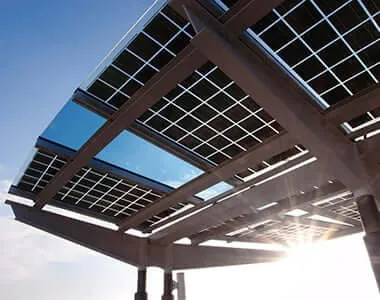Powerful 10kW Inverter Solutions for Efficient Energy Conversion and Sustainable Performance
Understanding 10kW Inverters A Key Component for Energy Solutions
In recent years, the demand for renewable energy solutions has surged, leading to an increased interest in solar power systems. Among the various components that make up these systems, inverters play a crucial role. A 10kW inverter is particularly significant in both residential and commercial solar setups, serving as the bridge between solar panels and the electrical grid or home energy systems.
What is a 10kW Inverter?
A 10kW inverter is designed to convert the direct current (DC) generated by solar panels into alternating current (AC), which is the form of electricity that powers most home and commercial appliances. The 10kW specification indicates the inverter's maximum output capacity. This means it can handle solar arrays that produce up to 10 kilowatts of power at optimal conditions. Understanding this capacity is essential for determining how many solar panels are needed to effectively use the inverter.
Types of 10kW Inverters
There are primarily two types of inverters used in solar setups string inverters and microinverters
.1. String Inverters These are the most common type of inverter used in larger installations. A string inverter connects several solar panels (or a string) to a central inverter. It simplifies installation and generally offers a more cost-effective solution for larger systems. However, the performance of the entire string can be affected if one panel is shaded or dirty.
2. Microinverters These devices are smaller and are installed at each solar panel, allowing for independent operation. In scenarios where panels may experience shading or varying sunlight exposure, microinverters can optimize the output of each panel. While they might come with a higher upfront cost, they can lead to greater energy production in less-than-ideal conditions.
Benefits of a 10kW Inverter
10kw inverter

1. Efficiency Modern 10kW inverters are designed with advanced technologies that ensure high efficiency rates, often exceeding 95%. This means more of the energy generated by the solar panels is converted into usable electricity.
2. Grid Compatibility Many 10kW inverters are designed to meet regulatory standards for grid connection. This means that solar power systems can send excess electricity back to the grid, often earning credits for the energy supplied.
3. Scalability A 10kW inverter is suitable for both residential homes with larger energy needs and smaller commercial applications. This versatility makes it an attractive option for a wide range of users.
4. Monitoring Capabilities Many modern inverters come equipped with monitoring systems. This allows users to keep track of their energy production and consumption in real-time, providing insights that can help optimize energy use and manage electricity costs.
Installation and Maintenance
Installing a 10kW inverter requires careful planning. It is essential to ensure that the electrical system of the home or business can support an inverter of this capacity. Furthermore, regular maintenance checks can enhance the longevity of the inverter and ensure it operates efficiently. This includes inspecting the connections, cleaning the unit, and ensuring that it is free from any debris or obstacles that might affect its performance.
Conclusion
A 10kW inverter is a vital component for anyone looking to harness solar energy efficiently. With its ability to convert solar power into usable electricity, its compatibility with the grid, and its scalability for different applications, this inverter type represents a significant step toward sustainable energy solutions. As we continue to advance in renewable technologies, understanding and optimizing the use of inverters will be crucial for maximizing the benefits of solar energy.
-
Unlocking Energy Freedom with the Off Grid Solar InverterNewsJun.06,2025
-
Unlock More Solar Power with a High-Efficiency Bifacial Solar PanelNewsJun.06,2025
-
Power Your Future with High-Efficiency Monocrystalline Solar PanelsNewsJun.06,2025
-
Next-Gen Solar Power Starts with Micro Solar InvertersNewsJun.06,2025
-
Harnessing Peak Efficiency with the On Grid Solar InverterNewsJun.06,2025
-
Discover Unmatched Efficiency with the Latest String Solar InverterNewsJun.06,2025







